Weingast B.R., Wittman D. The Oxford Handbook of Political Economy
Подождите немного. Документ загружается.

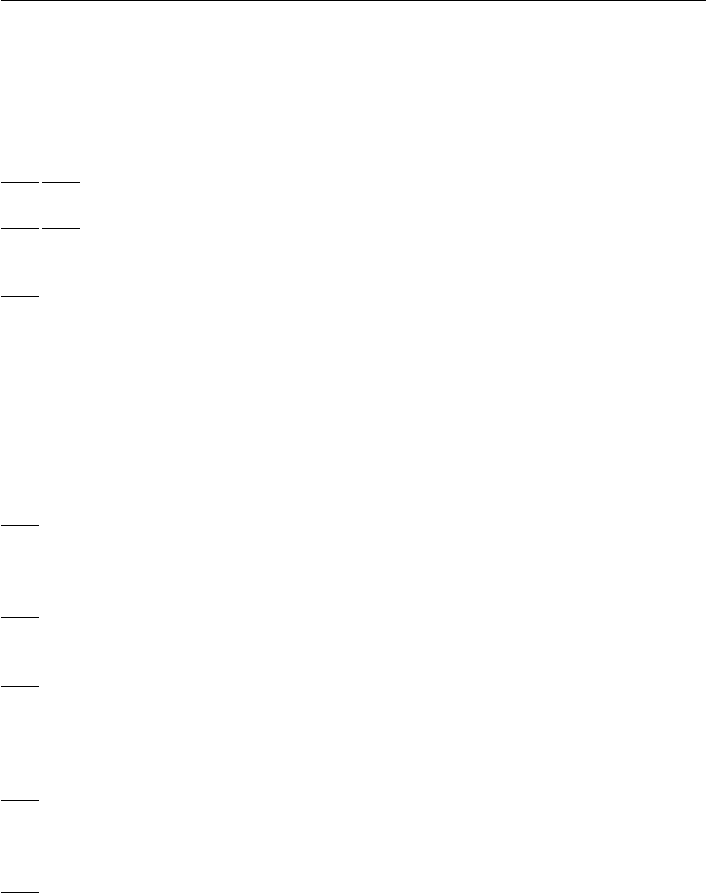
622 capitalism and democracy
Osborne,M.J.andSlivinski,A.1996. A model of political competition with citizen-
candidates. Quarterly Journal of Economics, 111: 65–96.
Perotti,R.1996. Growth, income distribution and democracy: what the data say. Journal of
Economic Growth, 1: 149–87.
Persson,T., andTabellini,G.1999. The size and scope of government: comparative politics
with rational politicians. European Economic Review, 43: 699–735.
2000. Political Economics: Explaining Economic Policy. Cambridge, Mass.: MIT
Press.
2005. The Economic Effects of Constitutions. Cambridge, Mass.: MIT Press.
Pierson,P.1995. Fragmented welfare states: federal institutions and the development of social
policy. Governance, 8: 449–78.
2000. Path dependence, increasing returns, and the study of politics. American Political
Science Review, 94: 251–67.
Polanyi,K.1944. The Great Transformation. New York: Rinehart.
Pontusson,J., andSwenson,P.1996. Labor markets, production strategies, and wage bar-
gaining institutions: the Swedish employer offensive in comparative perspective. Compara-
tive Political Studies, 29: 223–50.
Powell,B.2002. PR, the median voter, and economic policy: an exploration. Paper presented
at the Annual Meetings of the American Political Science Association, Boston.
Przeworski,A., andSprague,J.1986. Paper Stones: A History of Electoral Socialism. Chicago:
University of Chicago Press.
and Wallerstein,M.1982. Structural dependence of the state on capital. American
Political Science Review, 82: 11–29.
Riker,W.H.1980. Implications for the disequilibrium of majority rule for the study of
institutions. American Political Science Review, 74: 432–46.
1986. The Art of Political Manipulation. New Haven, Conn.: Yale University Press.
Rodden,J.2003. Reviving Leviathan: fiscal federalism and the growth of government. Inter-
national Organization, 57: 695–729.
2005. Hamilton’s Paradox: The Promise and Peril of Fiscal Federalism. Cambridge:
Cambridge University Press.
Rodrik,D.1999. Democracies pay higher wages. Quarterly Journal of Economics, 114: 707–38.
Roemer,J.E.1997. The democratic political economy of progressive taxation. Econometrica,
67: 1–19.
2001. Political Competition: Theory and Applications. Cambridge, Mass.: Harvard Univer-
sity Press.
Rogowski,R.1989. Commerce and Coalitions: How Trade Affects Domestic Political Alignments.
Princeton, NJ: Princeton University Press.
and MacRay,D.2003. Does inequality determine institutions? What history and (some)
data tell us. Paper presented in the Political Institutions and Inequality Study Group, Center
for European Studies, Harvard University, Oct.
Romer,T.1975. Individual welfare, majority voting, and the properties of a linear income tax.
Journal of Public Economics, 14: 163–85.
Rosenbluth,F.M., andThies,M.F.2001. The electoral foundations of Japan’s financial
politics: the case of Jusen. Policy Studies Journal, 29: 23–37.
Ross,M.2005. Is democracy good for the poor? Unpublished manuscript, UCLA Dept. of
Political Science.
Rueda,D., andPontusson,J.2000. Wage inequality and varieties of capitalism. World
Politics, 52: 350–83.
Schlesinger,J.1984. On the theory of party organization. Journal of Politics, 46: 369–400.
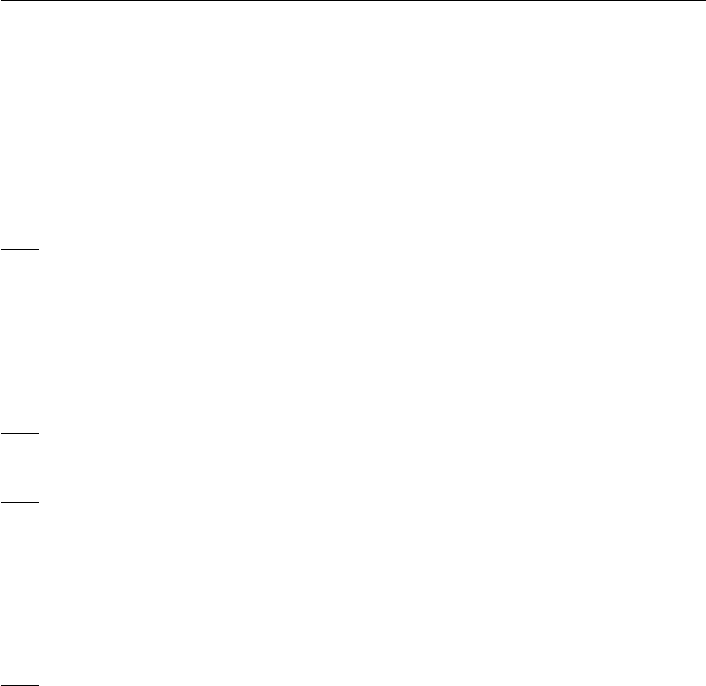
torben iversen 623
Schmitter,P.1979. Modes of interest intermediation and models of societal change. Pp. 43–
94 in Trends toward Corporatist Intermediation, ed. P. Schmitter and G. Lehmbruch. Beverly
Hills, Calif.: Sage.
Snyder,J.M., andKramer,G.H.1988. Fairness, self-interest, and the politics of the progres-
sive income tax. Journal of Public Economics, 36: 197–230.
Soskice,D.1999. Divergent production regimes: coordinated and uncoordinated market
economies in the 1980sand1990s. Pp. 101–34 in Continuity and Change in Contemporary
Capitalism, ed. H. Kitschelt, P. Lange, G. Marks, and J. D. Stephens. Cambridge: Cambridge
University Press.
and Iverson,T.2005. Why Governments Diverge from the Prefrences of the Median Voter.
Manuscript. Harvard University.
Stokes,S.1999. Political parties and democracy. Annual Review of Political Science, 2: 243–67.
Streeck,W.1991. On the institutional conditions of diversified quality production. Pp. 21–61
in Beyond Keynesianism, ed. E. Matzner and W. Streeck. Aldershot: Elagar.
Swenson,P.1991. Bringing capital back in, or social democracy reconsidered: employer power,
cross-class alliances, and centralization of industrial relations in Denmark and Sweden.
World Politics, 43: 513–44.
2002. Employers against Markets Cambridge: Cambridge University Press.
Thelen,K.1999. Historical institutionalism in comparative politics. Annual Review of Political
Science, 2: 369–404.
2004. How Institutions Evolve: The Political Economy of Skills in Germany, Britain, the
United States and Japan. Cambridge: Cambridge University Press.
von Hagen,J., andHarden,I.1995. National budget processes and commitment to fiscal
discipline. European Economic Review, 39: 771–9.
Wallerstein,M.1999. Wage-setting institutions and pay inequality in advanced industrial
societies. American Journal of Political Science, 43: 649–80.
Weingast,B.R.1995. The economic role of political institutions: market-preserving federal-
ism and economic development. Journal of Law, Economics, and Organization, 1: 1–31.
and Marshall,W.J.1988. The industrial organization of Congress: or, why legislatures,
like firms, are not organized as markets.JournalofPoliticalEconomy, 96: 132–63.
Wibbels,E.2003. Bailouts, budget constraints, and Leviathans: comparative federalism and
lessons from the early United States. Comparative Political Studies, 36: 475–508.
Williamson,O.E.1985. The Economic Institutions of Capitalism: Firms, Markets, Relational
Contracting. New York: Free Press.
Wittman,D.1973. Parties as utility maximizers. American Political Science Review, 67: 490–8.
chapter 34
..............................................................
INEQUALITY
..............................................................
edward l. glaeser
1 Introduction
.............................................................................
The insight that economics impacts politics as much as politics impacts economics
lies at the heart of political economy. This circle of causation is at the center of
research on the political economy of inequality. Democracy, political stability, and
executive constraints all appear to be more feasible in more equal societies. Public
policies towards redistribution and human capital can make societies more equal.
In Section 2 of this chapter, I review the causes of inequality. Recent increases in
inequality in the developed world are in part the result of skill-biased technological
change (Katz and Murphy 1992), but government policies influence how these tech-
nological changes impact different developed countries (Hanratty and Blank 1992).
Long-standing differences in inequality across countries may reflect colonialism and
patterns of agriculture, but initial differences in inequality also influenced political in-
stitutions, policies, and structures, which may have exacerbated economic inequality
(as in Moore 1996; Engerman and Sokoloff 2002).
In Section 3 I review the second half of the causal chain between inequality and
politics—the impact of inequality on government. In median voter models, inequal-
ity predicts more redistribution. However, greater inequality also means that the
wealthy have more resources to influence the political outcome. Great gaps between
rich and poor may also hurt democracy and rule of law if elites prefer dictators who
will protect their interests or if the disadvantaged turn to a dictator who promises to
ignore property rights.
In the last section of this review, I turn to the special question of “American
exceptionalism,” which in this context refers to the question of why there is so much
∗
I am grateful to the editors, Barry Weingast and Donald Wittman, for extensive comments and
editing.

edward l. glaeser 625
less redistribution and more inequality in the USA than in Europe. The differences
between the USA and Europe in inequality and redistribution have troubled authors
like Friedrich Engels, Werner Sombart, and Martin Lipset for more than a century.
American exceptionalism appears to be the result of ethnic heterogeneity and a
stable constitutional history, in contrast to European political institutions, which
have been influenced by numerous revolutions and two world wars. A large body
of evidence supports the hypothesis that ethnic heterogeneity reduces support for
welfare, and the USA is far more ethnically heterogeneous than Europe. The USA
also has political institutions, including a majoritarian government, federalism, and
checks and balances, which have limited the expansion of the American welfare state,
while European countries lack comparable institutions. These institutional differ-
ences are not exogenous, but rather reflect the fact that many European constitutions
were rewritten in the twentieth century by left-wing politicians when earlier monar-
chies were defeated militarily.
2 The Political and Economic Causes
of Inequality
.............................................................................
Most studies of inequality focus on income, but inequality can also be calcu-
lated based on wealth, consumption, or any other reasonable proxy for well-being.
Wealth or consumption have the advantage that they are less subject to short-
term income shocks, and the inequality of lifetime earnings is probably more
important than the inequality of transitory earnings. However, because wealth and
consumption data are not available in enough circumstances, most of the empirical
work focuses on inequality of annual income. Consequently, I focus my empir-
ical discussion on that variable. Nevertheless, improving inequality measures by
improving the measurement of permanent well-being is certainly one research
frontier.
Measuring income inequality also requires transforming the distribution of
income or wealth or consumption into a single measure that can be used in standard
empirical work. The literature on this issue parallels the industrial organization lit-
erature on market concentration. The most popular measure of income inequality is
the Gini coefficient, which is the difference between the 45-degree line and the Lorenz
curve that shows the cumulative distribution of income. A second measure is the
share of total national income possessed by various sub-groups of the population, e.g.
the share of total wealth owned by the richest 5 per cent of the population. In some
cases, these variables will actually reveal much more than a Gini coefficient, especially
if we are interested in knowing whether inequality matters because the rich are
particularly rich or because the poor are particularly poor. As different measures are
usually highly correlated, different empirical studies that use these different measures
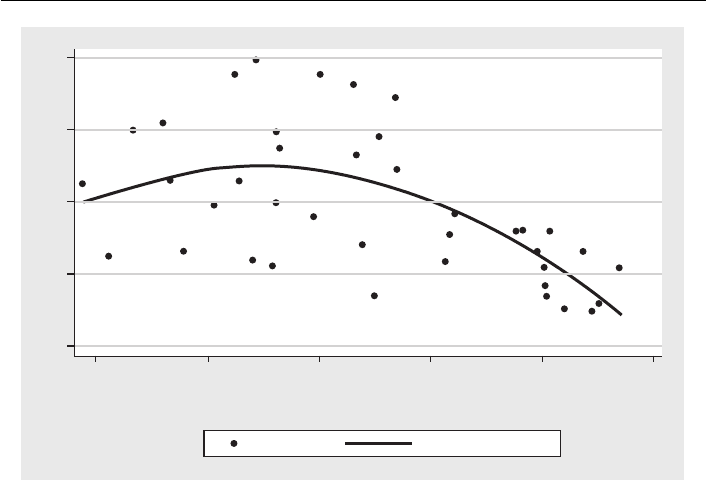
626 inequality
60
50
40
30
20
6
7
8
9
10
11
Log GDP per capita (constant 2000 US$)
GINI index Fitted values
Fig. 34.1 Inequality and income
often produce quite similar results (e.g. compare Persson and Tabellini 1994 with
Alesina and Rodrik 1994).
2.1 Inequality over Time
These empirical measures are then used by empirical researchers, who have pro-
vided a series of facts about the correlates of inequality. Perhaps the most famous
relationship is the Kuznets (1955) curve shown in Figure 34.1. Income inequality first
rises and then falls as countries get richer. This curve points to the initial period of
industrialization as the point of development where inequality is maximized. Indeed,
US history shows a “great compression” during the middle decades of the twentieth
century (Goldin and Margo 1992) as the relatively equal period between 1950 and
1975 followed the far greater inequality of the Gilded age and pre-depression America.
Figure 34.1 also illustrates American exceptionalism as the USA is much more unequal
than other countries of comparable income.
The Kuznets curve is not just an economic phenomenon; it also reflects political
factors. The general pattern in industrializing nations is that there are few public
efforts to redistribute during early industrialization. During this period, traditional
private providers of charity (churches, charities, families) are expected to look after
the bottom end of the income distribution. As industrialization proceeds, govern-
ments almost universally started taking a more active role in redistribution, which
is one reason why inequality declines with development. Development increases

edward l. glaeser 627
redistribution for at least three reasons: development is generally associated with
greater government size, probably due to increasing governmental competence;
development is associated with greater education and political skill on the part of
poorer citizens; and development transforms a dispersed agrarian workforce into
clustered industrial workers who can readily be organized.
Somewhat surprisingly, given the Kuznets curve, the great compression was fol-
lowed within the United States, and elsewhere, by a significant increase in inequality
since 1975.KatzandMurphy(1992) conclude that the period of rising inequality in the
USA appears to have been driven by rising demand for more skilled workers. The rise
in demand for the skilled might be the result of a number of different changes includ-
ing skill-biased technological change, increasing trade and globalization, the decline
of manufacturing, and unions. Pride of place appears now to be given to changing
technology (Autor, Katz, and Krueger 1998) as the cause of greater inequality, but
other factors also matter.
While most authors seem to believe that rising inequality within the USA is the
result of economic as opposed to political changes, the impact of these economic
changes is determined in part by a political filter. Technological changes and increases
in world trade should impact most developed countries in similar ways. Yet the
USA has experienced a much more striking increase in inequality than most other
comparable countries (Picketty and Saez 2003;BlauandKahn1996;Hanrattyand
Blank 1992), and economic forces alone do not appear to explain why inequality rose
so much more within the USA.
Political factors surely played some role in the greater increase in inequality within
the USA. At the top of the income distribution, less progressive taxation in the
USA made it easier for Americans to become rich and increased the incentives for
Americans to acquire large fortunes (Picketty and Saez 2003). Stronger unions in
Europe increased equality there among the many European workers whose salaries
are determined by collective bargaining (Blau and Kahn 1996). Unions have generally
fought inequality among their members, perhaps because heterogeneity breaks down
union cohesion or because of the quasi-democratic nature of most unions. At the
bottom of the income distribution, general unemployment benefits and restrictive
labor market regulations ensure that more of the less productive European workers
leave the workforce and are therefore excluded from measures of wage inequality.
2.2 Inequality across Countries
If changes in inequality within the USA and other countries are primarily the result
of changing returns to skills and government responses to those changing returns to
skill, then differences in inequality across countries reflect differences in the distri-
bution of skills. In particularly egalitarian countries, like those of Scandinavia, the
population is generally well educated and the distribution of skills is quite compact.
Conversely, particularly unequal developing countries like Brazil have enormously
heterogeneous skill levels between educated urban elites and less-educated agricul-
tural workers.
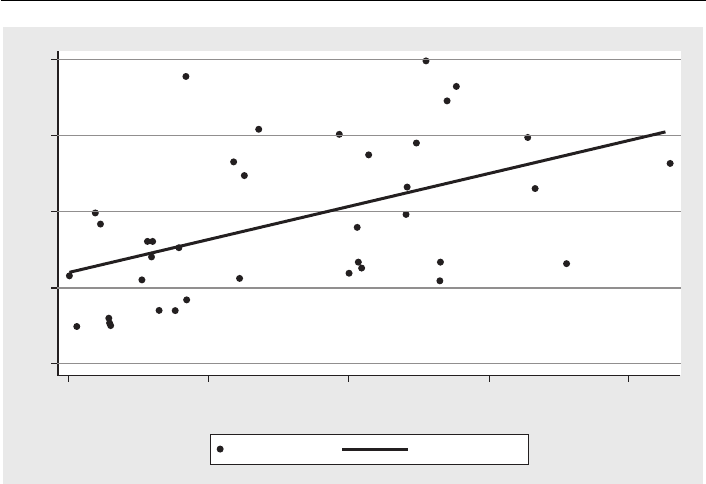
628 inequality
60
50
40
30
20
0.2.4
Ethnic fractionalization
.6 v
GINI index Fitted values
Fig. 34.2 Fractionalization and inequality
But if the inequality of skills underlies the inequality of income, then the primary
puzzle becomes understanding why skill inequalities are so different across countries.
Skill levels today are themselves the result of both government policies and long-
standing cultural forces, like religion or ethnicity, but patterns of national inequal-
ity appear to pre-date the era of large-scale government schooling (the nineteenth
century). As high levels of inequality often pre-date significant government redis-
tribution or schooling, cultural and religious causes are probably the first causes of
inequality across countries.
Protestant churches sought legitimacy in the Bible (as opposed to the traditions of
the Catholic Church), and these churches encouraged literacy to increase familiarity
with the Bible (Weber 2001). Protestant communities worked to create widespread
education that would ensure that everyone could read, which both increased the level
of education and decreased its variance by raising the lower tail of the distribution.
More importantly, skill inequality seems to come mostly from the juxtaposition
of ethnicities with different educational traditions, and in particular the extent to
which New World countries are made up primarily of Europeans or of mixtures of
Europeans and non-Europeans. As Figure 34.2 shows, the correlation between ethnic
fractionalization and income inequality is quite strong. Europeans who came to the
New World had a significant educational advantage over the natives they conquered,
at least in terms of skills that became valuable in developed economies. Even the great
empires of the pre-Columbian Americas lacked basic modern skills; the Incas had no
alphabet.
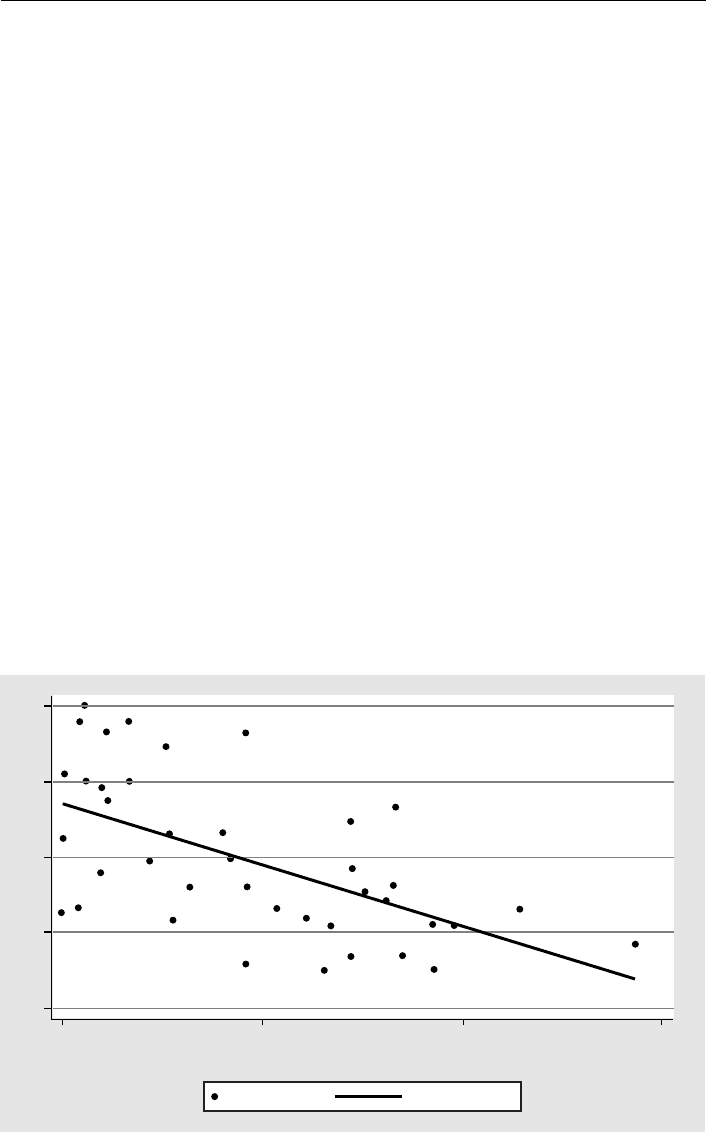
edward l. glaeser 629
Inequality then depends significantly on the extent to which nations are populated
by Europeans or mixtures of Europeans and natives. Engerman and Sokoloff (2002)
argue that countries with a comparative advantage in cash crops, such as sugar or
tobacco, attracted small numbers of Europeans who then relied on local and slave
labor to farm these crops. Those countries are less equal to this day. Acemoglu,
Johnson, and Robinson (2001) argue that settler mortality determined whether coun-
tries attracted large European migrations (which then largely eradicated the existing
native populations) or smaller-scale migrations that then interacted with native and
slave labor. Galor, Moav, and Vollrath (2004) present a more general theory of land
distribution and long-run inequality.
If populations with heterogenous educational backgrounds are the initial condi-
tion determining modern inequality, the actual distribution of income today also
depends on a large number of government policies towards schooling and redistri-
bution since that point. Many Asian countries, which once had small European elites
and large masses of uneducated natives, are now both well-educated and egalitarian.
These transformations reflect the results of government policies towards education
in countries like Singapore, Taiwan, and South Korea. By contrast, initial skill dif-
ferences in countries in ethnically heterogeneous countries were often widened, not
eliminated, by subsequent educational policies, which favored the European elites.
Figure 34.3 shows the strong negative correlation between inequality and social
welfare spending across countries. This correlation reflects both that social welfare
reduces inequality and that more initial inequality leads to less redistribution. While
some of this relationship reflects reverse causality, and omitted variables (like income
0
20
30
40
50
60
20
Social contributions (% of revenue)
GINI index
Fitted values
40 60
Fig. 34.3 Inequality and redistribution

630 inequality
and fractionalization) that drive both variables, there is little doubt that governments
have the power through tax policy and through spending to alter the income distrib-
ution of their country.
Understanding income inequality across countries also requires understanding the
reasons that a government decides to invest in its children, or to invest in redistribu-
tion more generally. Two factors, apart from inequality itself, appear to be important:
ethnic heterogeneity and political institutions. Ethnic and racial fractionalization
limits the tendency to redistribute income either because people are less willing to
support transfers to those who are ethnically different, or because ethnic differences
provide a means of demonizing policies that help the poor (Alesina and Glaeser
2004). Individual data on opinion polls and voting behavior, cross-state outcomes
within the USA, cross-national data, and history all support the view that ethnic
heterogeneity reduces redistribution. Luttmer (2001) shows that people are more
likely to support redistribution when they live around poor people of the same race
and less likely to support redistribution when they live around poor people of a
different race. Holding income constant, there is also a huge impact of race on the
willingness to support redistribution and vote Democratic, suggesting the signifi-
cance of race in politics.
Across states within the USA, the percentage of the population that is black strongly
predicts less-generous welfare systems; and across countries, ethnic heterogeneity
strongly predicts less redistribution; across countries, redistribution also declines
with ethnic heterogeneity (Alesina and Glaeser 2004). The history of redistribution
within the USA points to the important role that race has played at several critical
junctures, such as the fight against the Populists in the 1890s (see Woodward 1955).
Over the past twenty years, right-wing European politicians including Haidar, LePen,
and Pim Fortuyn have all fought the welfare state using rhetoric against ethnically
distinct immigrants.
Political institutions, like federalism, checks and balances, and proportional repre-
sentation, also impact the level of redistribution. The literature on majoritarianism
and proportional representation (Persson and Tabellini 2003; Miles-Ferretti, Perotti,
and Rostagno 2002) suggests that majoritarianism induces governments to cater to
the needs of the median voter or voters in swing districts who may or may not
be particularly poor. By contrast, proportional representation should at the least
focus more attention on marginal classes, who may desire redistribution. In practice,
proportional representation is probably more important because it ensures that well-
organized workers’ groups will get representation even in areas where they are a
distinct minority.
Federalism limits redistribution because out-migration of capital and the wealthy
serves as a break on the tendency to redistribute income (Qian and Weingast 1997),
except if the government actually wants the rich to flee because the rich represent
its electoral opponents (Glaeser and Shleifer 2004). Checks and balances are another
force that has tended to restrict the growth of welfare states.
While there is little doubt that political institutions do matter for the level of
redistribution in society, the greater question is whether these institutions should be

edward l. glaeser 631
takenasfirstcausesorasendogenousfactorsthatreflectdeepersocialforces(Glaeser
et al. 2004). Political institutions are hardly all that permanent. France acquired
proportional representation in 1946, with the Fourth Republic, lost it after the failed
right-wing coup that ended that government and put DeGaulle in power, reacquired
it under Mitterrand, and then lost it when the socialists realized that proportional
representation was helping right-wing extremists. The relative stability of Anglo-
American traditions has often led scholars to overstate vastly the degree to which
political institutions are durable. I will turn to the causes of institutional change in
Section 4 when I compare the USA and Europe.
3 The Impact of Inequality on Politics
.............................................................................
Inequality might impact political outcomes in three different ways. First, rising
economic inequality should impact the level of post-tax inequality because of an
increased preference for redistribution by the median voter. Second, higher inequality
might reduce redistribution and public good provision because economic resources
determine not only preferences, but the ability to influence political outcomes as
well. Third, economic inequality might influence the whole structure of political
institutions (like democracy) themselves.
The most straightforward prediction of the median-voter literature (summarized
by Londregan in this volume) is that redistribution will be popular when the mean
income is higher than the median income (Meltzer and Richard 1981). If income
follows a Pareto distribution, then an increase in variance will be associated with an
increase in the gap between mean and median income. Two of the more influential
papers that examine inequality within a median voter context are Persson and
Ta be ll in i ( 1994) and Alesina and Rodrik (1994), which both argue that greater inequal-
ity will lead to greater preferences for redistribution, and show a negative empirical
connection between inequality and growth.
The open question with these papers is whether inequality actually increases
redistribution. As shown in Figure 34.3, empirically there is a strong negative relation-
ship between inequality and social welfare spending, which seems to contradict this
claim. While this negative correlation might reflect that more redistribution reduces
inequality, it is also possible that more inequality leads to less redistribution rather
than more because in unequal societies the poor lack the resources to push their
political agenda.
The median voter model can also explain a connection between inequality and
public good provision. Greater inequality should work like any form of heterogeneity
and decrease the demand for common public goods (Alesina, Baqir, and Easterly
1999). For example, the rich might want a legal system focused on protecting property
while the poor might be more concerned with preventing interpersonal violence in
disadvantaged areas. Because these groups disagree, there is less willingness to invest
